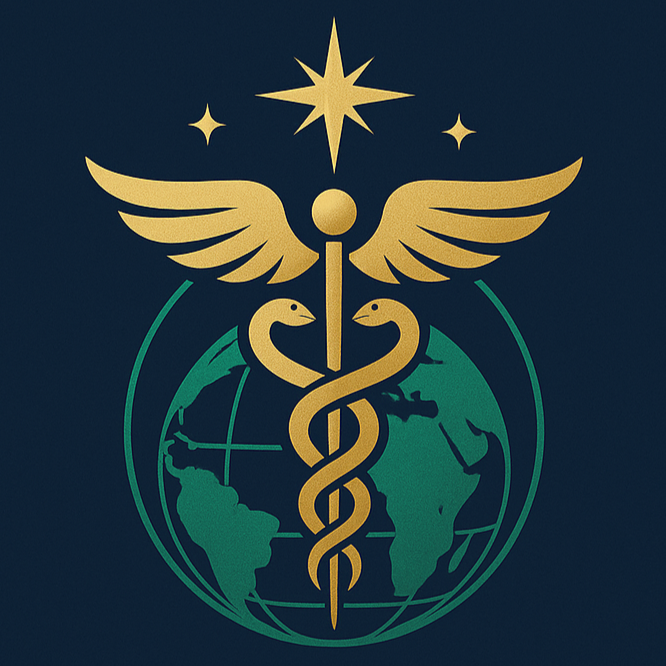IVF 試管嬰兒流程與1-4代技術詳細介紹
試管嬰兒流程基本介紹
夫妻雙方術前檢查監測卵泡、針劑誘導排卵取卵、取精體外受精培養成胚胎胚胎植入驗孕。以下為你詳細說明IVF試管嬰兒療程步驟。
Step 1:施作試管嬰兒前,夫妻雙方需先做不孕檢查
Step 2:月期週期 正式進入試管嬰兒IVF療程
Step 3:Day 1 - Day 3 月經來到院抽血照超音波 開始打排卵針或口服排卵藥 Day 3 回診照超音波及抽血
Step 4:Day 12 - Day 14 施打破卵針
Step 5:太太取卵先生取新鮮精子,開始使用黃體素至驗孕
Step 6:授精培養胚胎 3-5 天
Step 7:到院植入 根據每人狀況不同取卵後 3-5 天植入
Step 8:2週後驗孕檢測
試管嬰兒流程看來複雜又麻煩,但這一切都是為了提升試管嬰兒成功率。透過藥物刺激卵泡發育,提高成熟的卵泡數目,利用抽血與超音波幫助醫生判斷卵泡數目、大小與卵泡成熟度等;都有助於提升試管嬰兒成功率,是取得較多且成熟的卵子的必要過程。
第1-4代試管嬰兒技術:ICSI/PGS/Time-lapse/AI智能選胚
各代試管嬰兒療程差別,主要在於適用的對象不同,不能以產品越新代就越厲害的思維去衡量。首要之事,還是得了解各代的技術與差異,才能選擇適合自己的試管嬰兒技術,進而提升試管嬰兒成功率。建議與主治醫師討論後,選擇適合自己的試管嬰兒療程!
第1代試管嬰兒:
使用體外受精+胚胎植入,是將精卵放在同一個培養基中,讓精子和卵子在其中自然授精,適合輸卵管堵塞、子宮內膜異位、內分泌等引起的不孕症患者。
- 第1代試管嬰兒對於男性存在精子數量不足的問題,可能導致體外授精失敗,成功懷孕率約20%-30%。
第二代試管嬰兒:
使用單一精蟲顯微注射技術 (ICSI),胚胎師在顯微鏡下操作,使用特殊固定器將卵子固定,再透過針管穿透卵細胞外面的透明帶和卵細胞膜,將精子注入。
Piezo-ICSI(Piezoelectric Intracytoplasmic Sperm Injection,壓電式顯微注射) 是一種先進的顯微操作技術,它是傳統ICSI技術的升級版,旨在提高受精率及胚胎發育的成功率並減少卵子損傷。
- 第2代試管嬰兒可針對男性精子數少且活動力不足及女性採卵數少者,成功懷孕率約50%-60%。
第三代試管嬰兒:
採用胚胎著床前染色體篩檢技術(PGT-A),當胚胎培養發育至第 5-6 天 (囊胚期)時,透過胚胎切片,從胚胎外圍的滋養層細胞取出 5-10 顆細胞;透過分子診斷,進行染色體數目檢測,確認沒有染色體套數異常後,再植入正常的胚胎,來增加懷孕率。
第3.5代試管嬰兒:
加入胚胎縮時攝影(Time-lapse)技術, 配有 24 小時全天候高精密監控,更快速準確的判定胚胎發育狀況。
- 第3代試管嬰兒+第3.5代試管嬰兒著重在胚胎著床前的染色體診斷,協助習慣性流產、多次胚胎著床失敗的患者找出原因,成功懷孕率可達60%-70%。
第四代試管嬰兒:
結合胚胎著床前染色體篩檢(PGS)+胚胎縮時攝影(Time-lapse)+AI智能選胚,透過國內外累計超過 40000 個試管寶寶的大量胚胎型態發展數據庫,深度研究並發展 AI智能選胚技術,提升試管嬰兒成功率。
- 第4代試管嬰兒結合AI智能選胚技術,成功懷孕率約70%-80%。
試管嬰兒一次成功機率多高?
台灣試管嬰兒植入一次就成功受孕的機率平均約落在30%,比自然受孕的機率高,
提高試管植入成功率的關鍵:
- 選擇具有強大實驗室的生殖醫學中心,以及專業且有豐富試管嬰兒操作經驗的醫師。
- 卵子品質會影響到胚胎品質,可以透過醫師的專業協助安排養卵計畫。
- 子宮是孕育胎兒的家,著床環境的好壞與否都會影響試管嬰兒的成功率:透過子宮內膜容受性檢測(ERA檢查),找到個別女性最適合植入胚胎的時機──「著床窗期」(著床關鍵期),提高著床受孕率。
- 胚胎染色體異常是試管失敗的常見原因,挑選出品質良好的胚胎移植回子宮,能提高胚胎著床率及懷孕率:
- 胚胎著床前基因診斷(PGT-M,舊稱PGD)
- 胚胎著床前染色體篩檢(PGT-A,舊稱PGS)
- 胚胎植入前染色體結構重排檢測 (PGT-SR)
試管嬰兒植入顆數會影響成功率嗎?
胚胎植入數越多,多胞胎(雙胞胎或以上)的機率也會相對增加,提高母體發生併發症及胎兒發生早產、低體重兒...等的機率。因此醫師會根據病患的年齡及身體狀況來決定試管嬰兒的胚胎植入數,同時需遵守人工生殖法台灣生殖醫學會頒佈的胚胎植入數指引。
建議植入胚胎數量
- 35歲以下:1~2顆胚胎
- 35~37歲:最多2顆胚胎
- 38~40歲:最多3顆胚胎
- 41歲以上:最多4顆胚胎
- 經過胚胎著床前染色體篩檢(PGS)確認為正常的胚胎:1顆胚胎
- 試管植入後曾成功、第一次進行試管療程、胚胎品質良好、有多餘優秀胚胎可凍存、36歲或以下的病患:1顆(避免植入多顆胚胎增加多胞胎的機會)
胚胎等級ABC與成功率的關聯
經臨床觀察,大部分的著床失敗跟胚胎品質有關。在試管嬰兒療程中,胚胎師會分別在第1、3、5天觀察胚胎的發育狀態,依胚胎等級在D3和D5中選擇胚胎植入的時間點。品質越好的囊胚等級可以預期有更好的著床成功率,也表示胚胎發育形態越良好。
- 優質胚胎(AA)
- 良好胚胎(AB,BA ,BB)
- 一般胚胎(AC,BC,CA,CB)
- 較差胚胎(CC)
試管植入D3還是D5的胚胎比較好?
簡單來說,植入多顆Day3胚胎策略是走以量取勝的路線,植入Day5的胚胎就是高命中率的一擊即中。但一切都取決於母體卵子的數量及品質,試管胚胎植入前最好先諮詢醫師的專業意見。
試管植入D3胚胎
Day3胚胎為卵裂球,此階段會分裂出6至8顆細胞。
D3胚胎分級方式:
【數字:細胞數目】+ 【第一個英文字母:細胞對稱性】+【第二個英文字母:細胞碎片比例】
適合植入對象:
建議卵巢功能不佳,或取得卵子較少的患者,可植入一顆以上Day3的胚胎來提升懷孕成功率。
注意事項:
容易產生多胞胎,及無法採用胚胎著床前染色體篩檢(PGS)/基因診斷(PGD)來排除帶有異常的染色體的胚胎。
試管植入D5胚胎
Day5胚胎為囊胚,此階段會分裂出外圍的滋養層細胞和內層的內細胞團。
D5胚胎分級方式:
【前兩碼英文字母:囊胚擴張大小】+ 【第二個英文字母:滋養層細胞】
適合植入對象:
Day5的胚胎是可以發育到囊胚的胚胎,因此植入著床率較高,適用於年紀較輕及取卵較多的患者。
注意事項:
不是每個胚胎都可以長到第五天,有可能面臨第五天無胚胎可植入的困境。Day5的胚胎植入懷孕後,早產機率較高及出生兒體重較輕。
試管嬰兒風險高嗎?後遺症有哪些?
其實即使是自然受孕,胚胎也會有2%-3%機率會出現先天性缺陷,透過專業生殖醫學技術,反而更能協助不孕夫妻篩選出品質較佳的胚胎。
- 根據歐洲生殖醫學會(ESHRE)期刊《Human Reproduction》刊登的研究,更指出試管嬰兒的智商和行為發展與自然受孕無異。
- 而美國生殖醫學會2020年發表的報告也指出,試管嬰兒在成績方面與自然受孕嬰兒並沒有顯著的不同,智商不會特別高也不會特別低,孩童在智商上的差異,主要是基因及後天造成的。
試管嬰兒植入後副作用有哪些?
- 排卵針劑引起之不適:可能會出現腹脹、腸胃不適、疲倦、噁心想吐、頭痛、體重短暫增加等症狀,通常症狀較輕微,且短時間內就會緩解。
- 卵巢過度刺激症候群(OHSS): 少數人在卵巢受到排卵藥物刺激後,會因卵泡過多而出現較強烈的刺激反應,導致發生腹脹、腹痛、口渴、噁心想吐、尿量減少、呼吸困難等症狀,大部分患者在1-2周內就會恢復,若症狀較嚴重則需住院治療。
- 多胞胎妊娠:試管嬰兒療程會使用排卵藥物來增加排卵數目,同時可能會增加多胞胎機率,是較常見的試管嬰兒副作用,此副作用出現的機率大約有20%,大多會是雙胞胎。
- 子宮外孕:試管嬰兒也有極低機率會出現子宮外孕風險,若不幸發生會以藥物或手術進行治療,儘早停止妊娠以免造成媽媽生命危險。
如何避免試管嬰兒風險?
進行試管嬰兒療程除了上述的針劑引起不適、卵巢過度刺激症候群、多胞胎妊娠、子宮外孕等副作用與併發症外,試管嬰兒過程中的取卵手術也可能會有出血、感染等風險,另外在植入手術後也有機率發生骨盆腔感染或出血。
對於這些可能發生的狀況,可以藉由選擇專業的人工生殖醫學中心和經驗豐富的專科醫師,來降低試管嬰兒療程中可能遇到的風險。
試管嬰兒注意事項
試管嬰兒植入前注意事項
- 採用地中海飲食,補充維他命D3、DHEA、Q10、肌醇及葉酸提高卵子品質。
- 保持良好作息及飲食均衡,避免熬夜、菸酒。
- 可搭配適度運動強化身體機能。
試管嬰兒植入中注意事項
- 植入前醫師會根據療程使用不同藥物,務必依照醫囑使用。
- 取卵前需避免性生活,因為有多顆卵泡正在發育,卵巢會比較腫脹,應避免劇烈運動,以防卵巢扭轉的可能性。
- 若身體不適須看診用藥,應告知醫生正在進行試管療程,請醫師開立不影響療程的藥物。
試管嬰兒植入後注意事項
植入試管嬰兒後,應注意避免以下事項:
- 「不」劇烈運動、過度勞動或提重物(3公斤以上)
- 「不」進行性生活,在植入後至懷孕前三個月應避免
- 「不」過度焦慮,身心保持愉悅健康狀態
- 「不」泡澡及溫泉,以免胚胎不易發育
- 「不」久蹲、腹部用力或趴睡
試管嬰兒植入後也要多留意飲食均衡,菜單規劃上可多攝取新鮮蔬果、蛋白質、五穀類來補充完整營養。
另外也要少吃精緻食物、油炸、燒烤類,並且試管植入後飲食禁止薏仁、麻油、中藥、冰、菸酒,或太燥性/寒性及活血的食物,以免引發子宮收縮。
